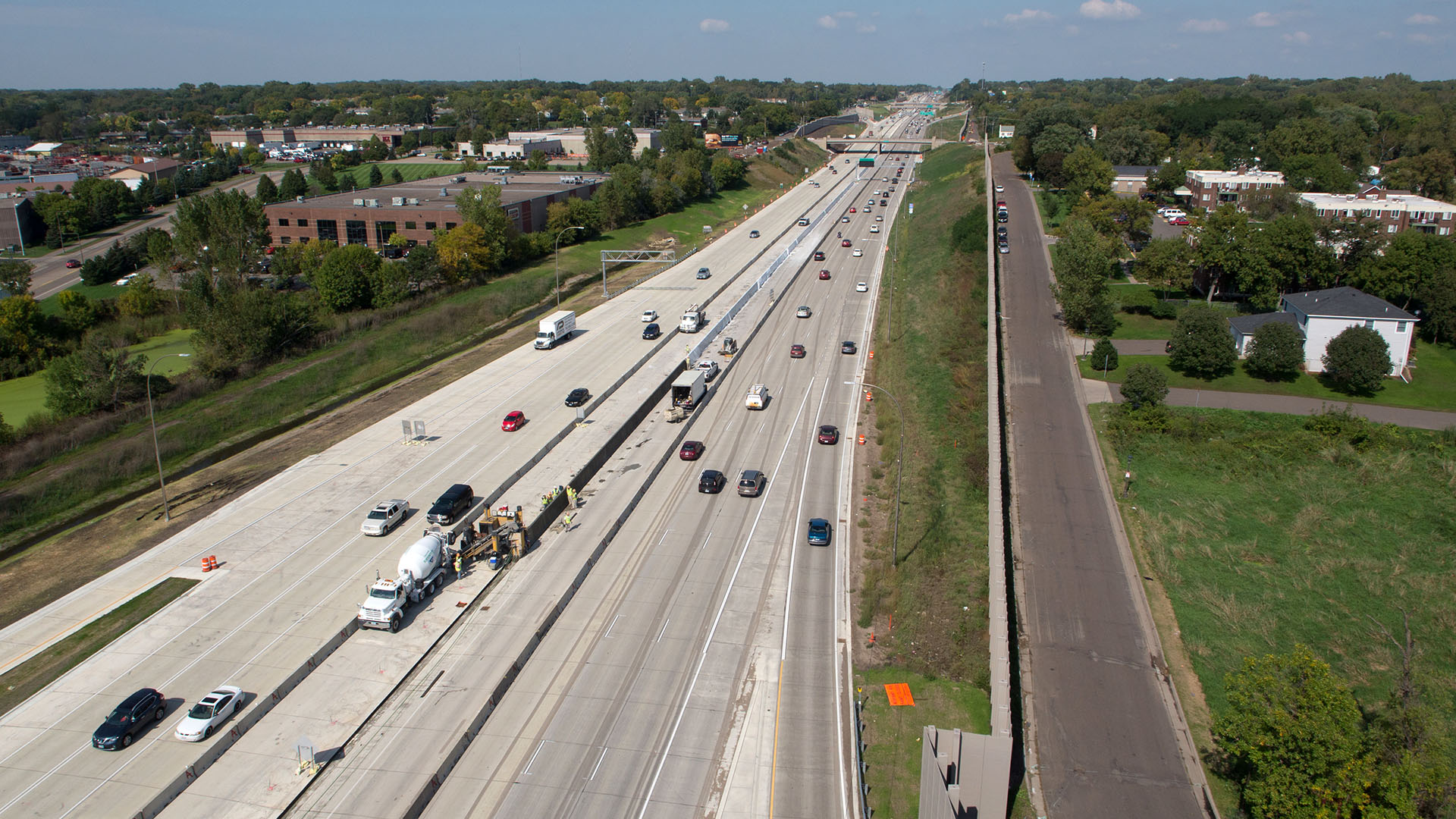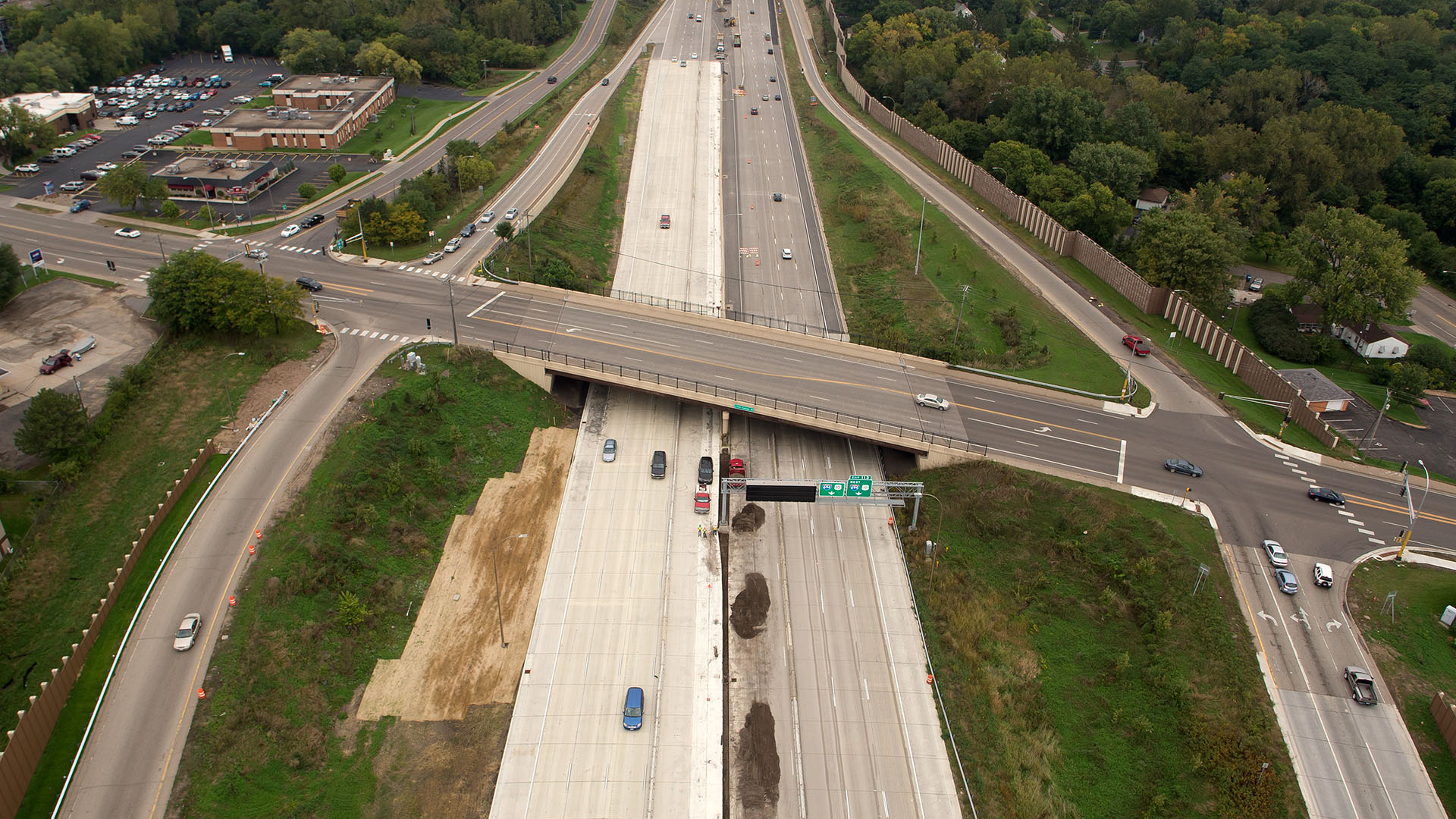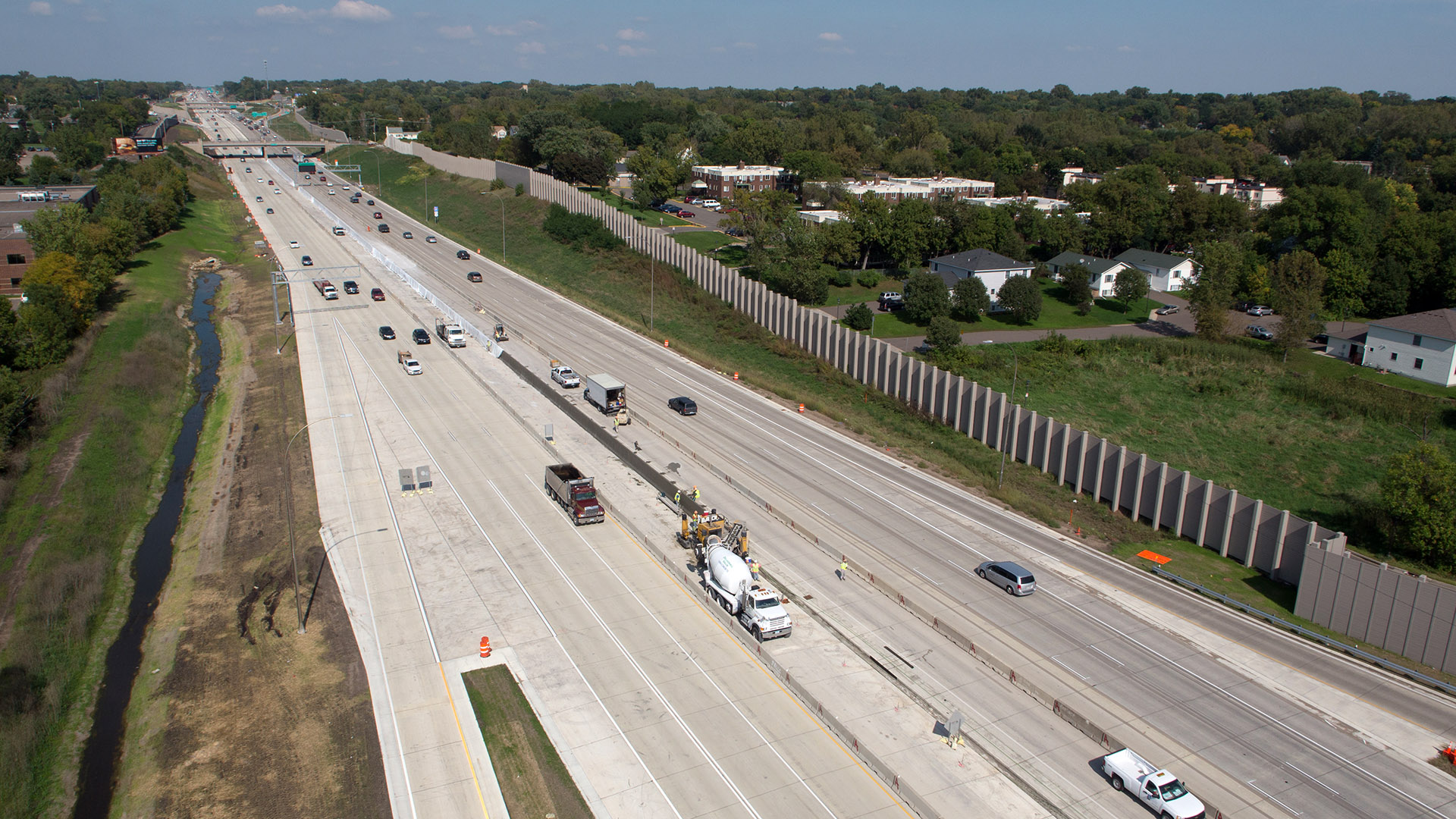Highways and Bridges
I-35E MnPASS Express Lanes
I-35E MnPASS Express Lanes
Faster and more reliable travel options for commuters continue to improve traffic flow and access to downtown St. Paul, Minnesota. MnDOT’s new MnPASS lanes allow commuters an opportunity to escape the gridlock using high-occupancy vehicle (HOV) toll lanes along the corridor. And, for a fee, solo drivers can use the highway express lanes reserved for carpools, buses and motorcycles.
From October 2013 to November 2015, RSA Construction Group crews worked on a 3.5-mile stretch of Interstate I-35E north of downtown St. Paul. The project included construction of nine bridges and widening the road to facilitate the addition of new toll-managed lanes. Additional work included building noise and retaining walls, utility relocation, cross street construction and paving. Since project limits tied directly into another active MnDOT project, close coordination of traffic phasing and utility work was critical to maintaining the schedule.
As a design-build project, the RSA team was able to implement cost-saving innovations, including revised traffic phasing, re-use of onsite materials, and grading plan revisions that eliminated quantities of both the drainage pipe and sound wall. Crews also worked aggressive schedules to provide the public with the least amount of impact possible, including offline, segmental bridge construction so an existing bridge could remain open. The finished structure was then slid into place with minimal road closures.
With any fast-paced schedule, planning sequential work in the same area is challenging. To mitigate conflicting crew schedules, the project was divided into smaller portions. Crews prioritized their efforts to complete pre-identified critical activities, while maintaining a backup plan during day-to-day operations.
Multiple crews dedicated their days, nights and many weekends to deliver a successful project. When completed, they had performed massive excavation, used nearly two-and-a-half million pounds of rebar, and imported enough fill sand to fill 62, full-size Olympic swimming pools.


